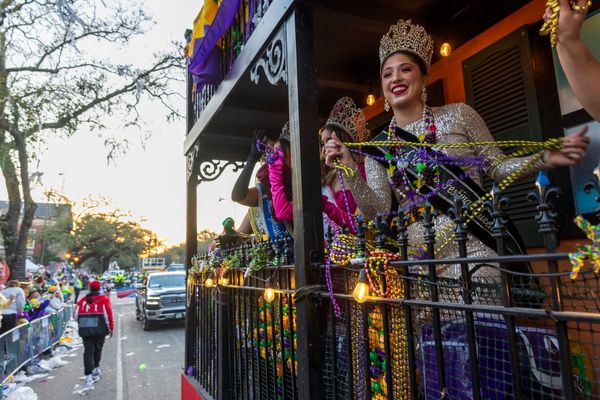For information on the third coronavirus relief package, please visit our “American Rescue Plan: What Does it Mean for You and a Third Stimulus Check” blog post.
Having a side gig can help you make ends meet or build your rainy day fund. Income from freelancing, running your own small business, or working at a second job brings in extra income without requiring you to quit your day job. But, like your main source of income, a second job or multiple side gigs must be reported on Form 1040, in addition to others, at tax time.
Get every dollar you deserve with unlimited tax advice from experts who know self-employment taxes inside and out. Whether you’re a freelancer, independent contractor, small business owner, or have multiple streams of income, TurboTax Self-Employed can help you uncover the industry-specific deductions you qualify for. Plus, you can get up to an additional $20 off when you file with TurboTax Self-Employed.
This tax year will be slightly different for you after the IRS changed the forms gig economy workers receive from payers to report side income. On top of this change, tracking your income and handling taxes for these multiple jobs can already be tricky.
To help you with your tax preparation, we've laid out the information you need to know to get your taxes right. Let's look at important payment thresholds, questions about tracking and reporting cash payments, penalties for failing to report all your income, and useful deductions you can use to reduce your taxable income.
Reporting most income to the IRS
If you're one of the millions of gig economy workers, such as a freelancer or contractor, you may have received payments totaling more than $600 from any one of your side jobs during the tax year. If so, the individual or company that paid you generally must supply you with Form 1099-NEC for nonemployee compensation. If you receive payments through online payment services such as PayPal, the reporting form may be a 1099-K. Payers will also send these forms to the IRS to report your income.
Payers should send out 1099 forms by January 31 that state the dollar amount you earned and if they withheld anything from your payments. This isn't common, but it does happen. If you don't receive this form, you still have to report your earnings.
For example, if you earned less than $600 from a side gig in 2021, the payer doesn't have to send you a 1099 form, but you still have to report the earnings. Therefore, if you earned money at a side job during the tax year, you should report your earnings to the IRS. Failing to do so can result in penalties and fines. This also applies to cash payments you received for services you performed.
Under the American Rescue Plan, changes were made to Form 1099-K reporting requirements for third-party payment networks like Venmo and Cash App that process credit/debit card payments or electronic payment transfers. The change begins with transactions starting in January 2022, so it doesn’t impact 2021 taxes. Beginning with tax year 2022 if someone receives payment for goods and services through a third-party payment network, their income will be reported on Form 1099-K if $600 or more was processed as opposed to the current Form 1099-K reporting requirement of 200 transactions and $20,000. This change could impact people working in the gig economy, online sellers, independent contractors, and other self-employed business owners.
Reporting vs. not reporting nonemployee compensation
If you receive a 1099 form that reports your nonemployee compensation and you don't include the income on your tax return, you may be subject to a penalty for not filing. By failing to report this income on your 1040 tax form, it will result in underreporting your income and your tax liability.
If this occurs and the IRS determines your tax liability to be substantially underreported, the IRS may impose an accuracy-related penalty equal to 20% of your underpayment. The IRS considers the understatement substantial if the underreported tax liability is more than the larger of 10% of the correct tax or $5,000 for individuals.
For example, if you fail to include $10,000 of nonemployee compensation on your tax return, this will result in you understating your taxable income by $10,000.
- If you're a single filer falling into the 22% income tax bracket, your penalty would be $440.
- $10,000 x 22% tax bracket x 20% accuracy-related penalty = $440
This same accuracy-related penalty can also apply to unreported cash payments made to you if the IRS uncovers evidence of their existence.
Understanding Form 1099-NEC on your return
To avoid an underpayment penalty, be sure to include your nonemployee compensation income on your Form 1040. In most cases, if you have nonemployee compensation, you'll need to complete Schedule C, Profit or Loss From Business. Once complete, you then transfer the net earnings that appear on this schedule to Form 1040.
Our TurboTax Live experts look out for you. Expert help your way: get help as you go, or hand your taxes off. You can talk live to tax experts online for unlimited answers and advice OR, have a dedicated tax expert do your taxes for you, so you can be confident in your tax return. Enjoy up to an additional $20 off when you get started with TurboTax Live.
If you have one or multiple side jobs, filing your taxes isn't remarkably different unless your jobs and sources of income are very different from each other. If they are, you may need to attach multiple Schedule Cs to your return.
For rents or royalties, these get reported on the newly reformatted 1099-MISC and will require you to complete Schedule E, Supplemental Income or Loss. This supplemental income or loss will then also transfer to Form 1040.
Using allowable deductions to trim your tax bill
Business expenses reduce your taxable income, lowering your tax bill. As a gig economy worker, you become eligible to deduct certain expenses from your self-employment income, which you can't do as a W-2 employee.
For example, if you're a rideshare driver, you should track the mileage on your car while ridesharing. You can deduct that portion of your mileage at the per-mile rate — which includes maintenance, gas, and insurance costs — at tax time.
To understand the expenses you may be able to claim as a deduction, you'll need to first determine the difference between them.
- Ordinary expenses are those that are common and accepted for your business
- Necessary expenses are those that are helpful and adequate for your business
For example, a ski teacher might deduct their ski boots as an "ordinary expense," and a landscaper might deduct rent for a storage space used to store landscaping tools and equipment. While a storage space may not be required for landscaping, it can still be deducted as a "necessary expense" because it's helpful to the business.
Common deductible expenses related to your side gig include:
- The business portion of your home
- Business mileage on your car
- Dues and subscriptions you paid to business-related organizations
- Necessary tools and equipment
- Tuition for work-related education and training costs
- Home office tax deduction
Claiming the home office deduction
For the home office deduction, the rules for claiming this expense have changed since the recent tax reform. Prior to the Tax Cuts and Job Acts (TCJA) passing in 2017, employees could deduct reimbursed employee business expenses, which included the home office deduction. However, for tax years 2018 through 2025, the itemized deduction for employee business expenses has been eliminated. As a result, employees can no longer claim the home office deduction, even when events like the pandemic require you to work from home.
If you're self-employed and own your own business, to qualify for the home office deduction, you must meet the following criteria:
- Exclusive and regular use: You must have a portion of your home or property set aside as the place where you regularly conduct your business. This is true whether you live in a house, apartment, condominium, mobile home, or boat, and applies to outbuildings such as a garage, barn, or workshop. It doesn't include any part of your property used exclusively as an inn, bed and breakfast, or other hospitality business.
- Principal place of business: Your home office must be the central location for all your business activities. If you’re a tradesperson such as a general contractor who can’t perform your work from one location, it can be the place you regularly use for administrative work such as accounting and communications. It can also be a place where you regularly meet with customers or clients. Some exceptions to this rule include daycare and storage facilities.
TurboTax Self-Employed will ask you simple questions about your life and help you fill out all the right forms. Perfect for independent contractors and small businesses. We’ll search for over 500 tax deductions to get you every dollar you deserve and help you uncover industry-specific deductions.







